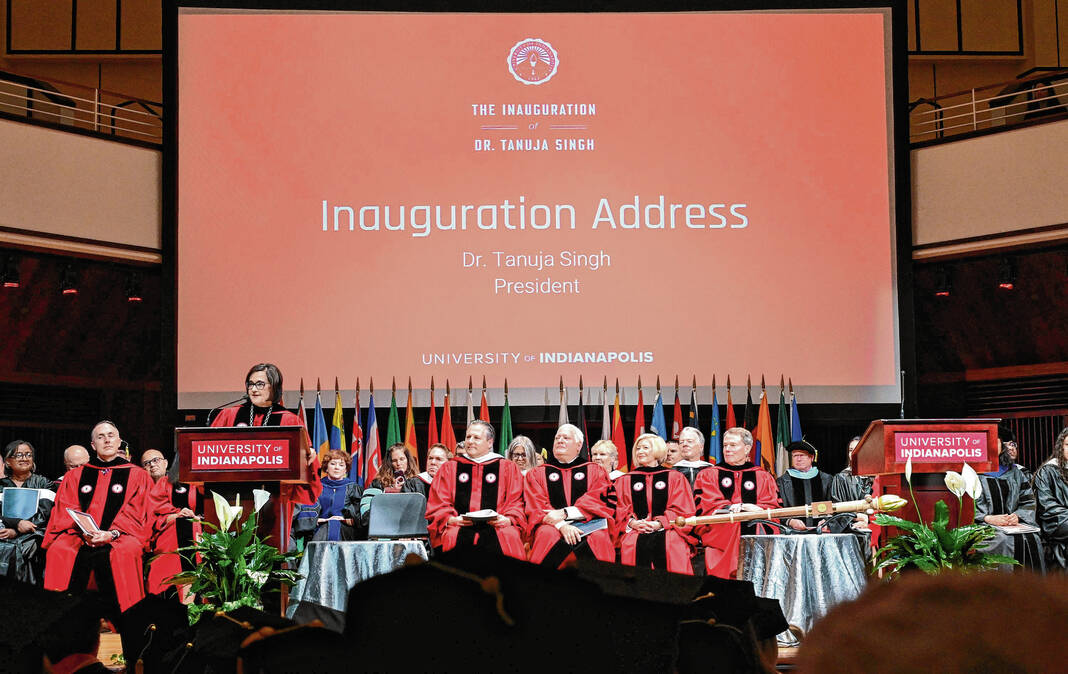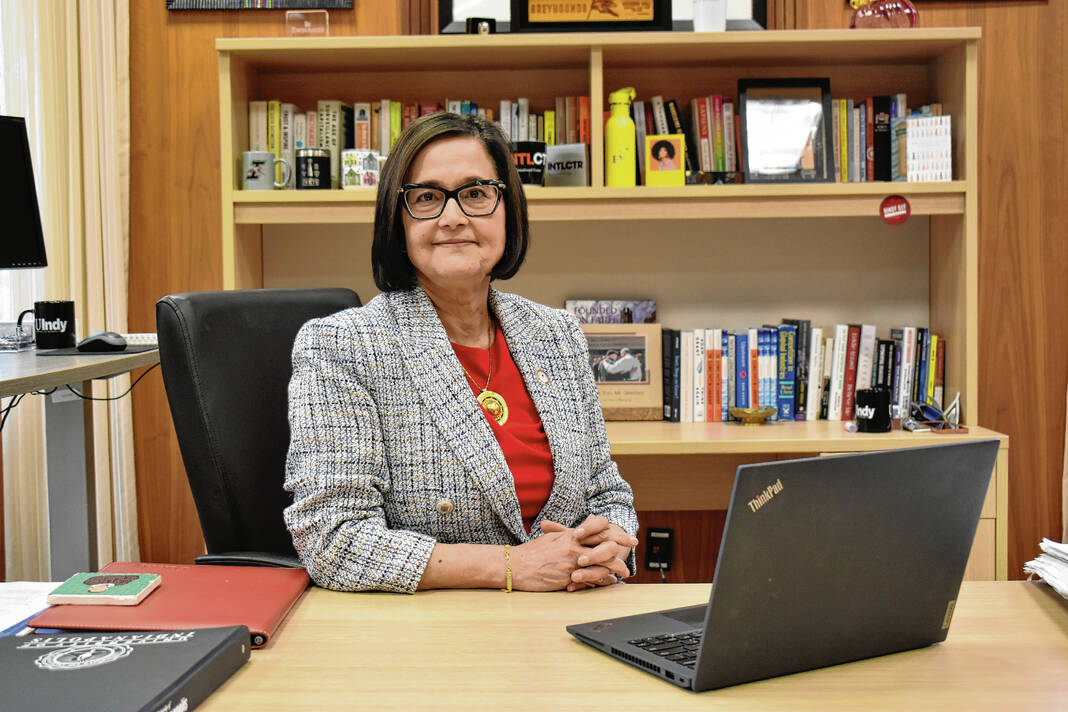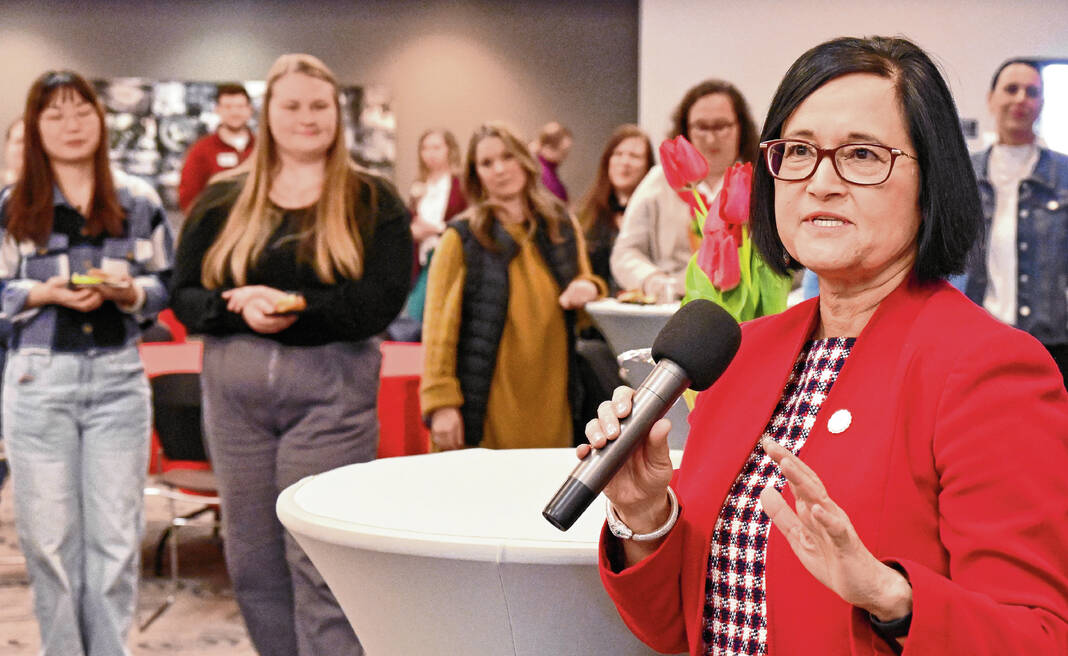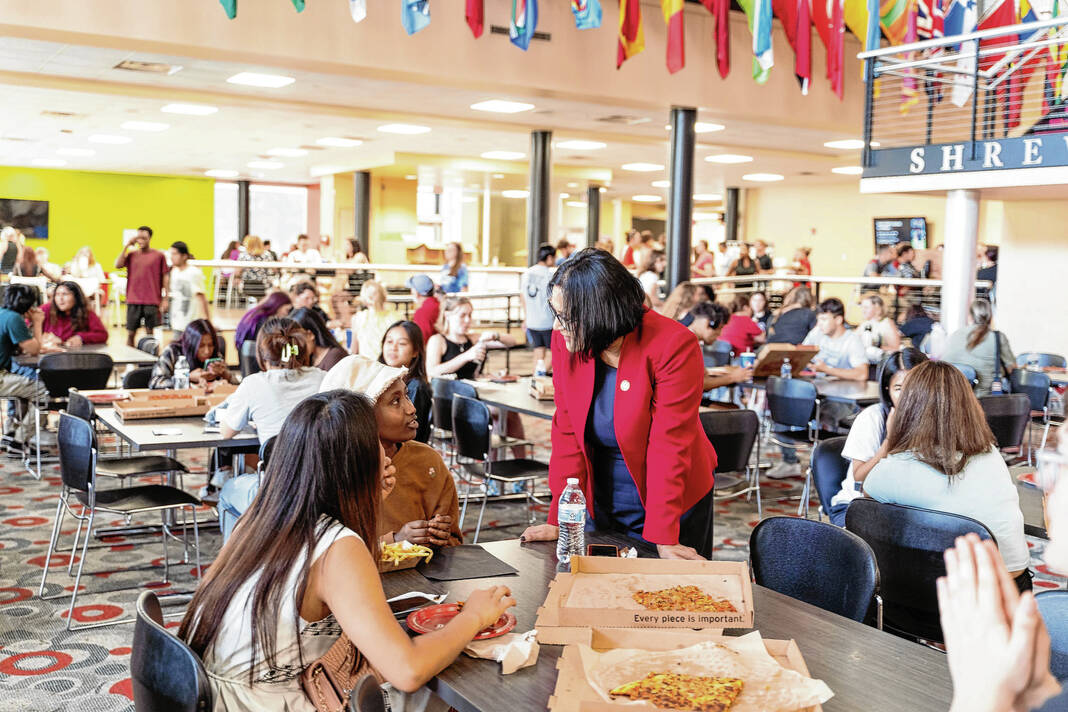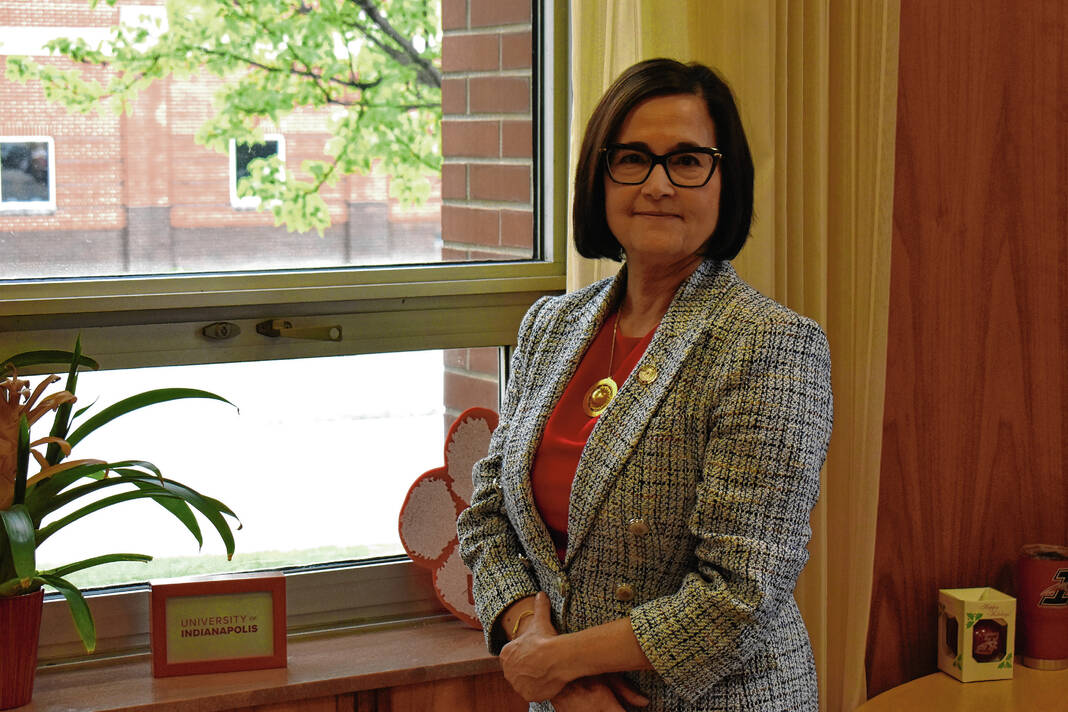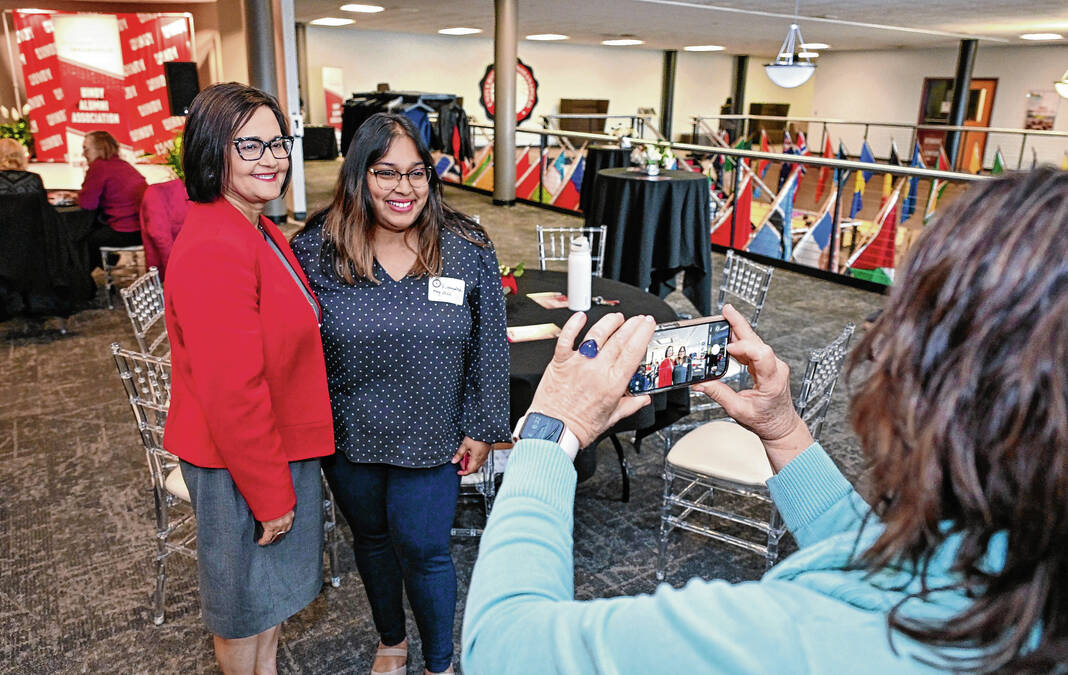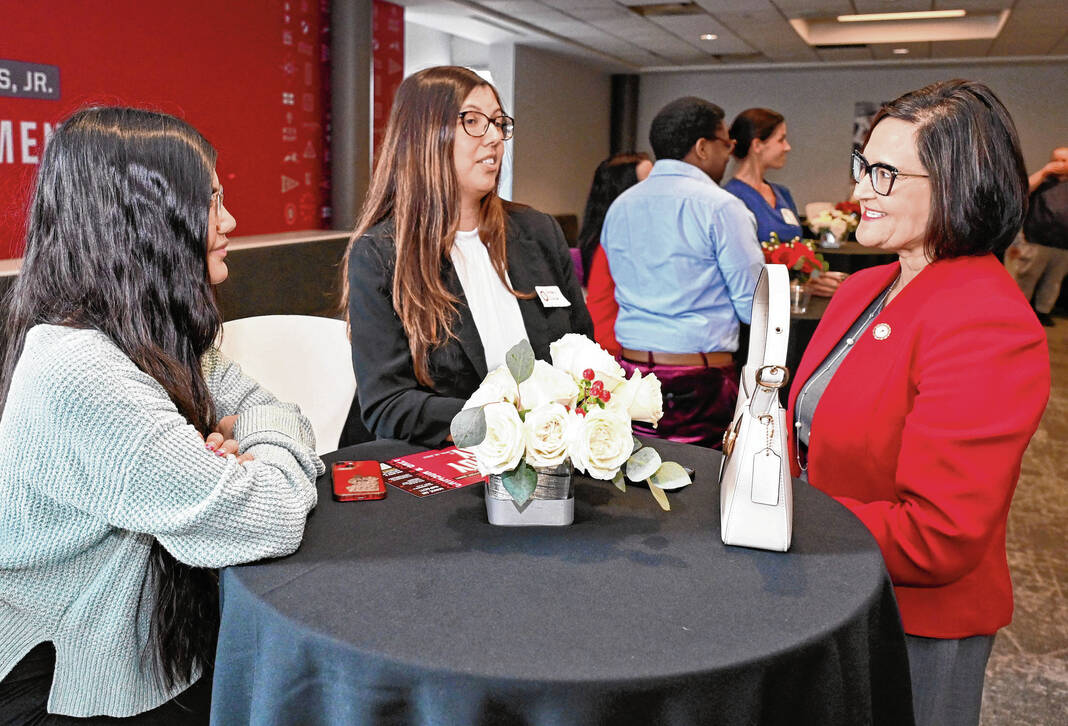INDIANAPOLIS — Nearly 10 months into the job, the president of the University of Indianapolis has bold plans for its future.
Dr. Tanuja Singh was named the southside university’s 10th president — the first woman of color to serve in the role — in March 2023 after an extensive national search. She took over the office in July 2023 and was formally inaugurated during an April 5 ceremony.
Before coming to Indianapolis, Singh served as the provost and senior vice president of academic affairs at Loyola University in New Orleans. Prior to this, she served as dean of the Greehey School of Business at St. Mary’s University for 11 years and worked at Northern Illinois University for 13 years, where she held roles as department chair and professor of marketing.
A few weeks after her presidential inauguration, Singh spoke with the Daily Journal last week about her first months in office, the state of the university, its plans for expansions and more.
Coming to UIndy
Before she committed to UIndy, Singh looked at the quality of the institution, its programming, how strong its programs were, what the college was doing, and how relevant it was. She saw excellent programming in every area — engineering, health sciences, business, education and humanities. Singh also noted the university is student-focused, she said.
“We are a very strong university when it comes to academics, but our primary purpose is not research. Our primary purpose is our students,” Singh said.
Since the economic growth of Indianapolis is strong, this provides an opportunity to build programs and work “very closely” with community partners, she said. And because UIndy leaders have an innovative mindset, this makes room for a president to make an impact, she said.
In the past nine months, Singh has met with corporate leaders, government officials nonprofit leaders and more. She’s also met with UIndy’s faculty and laid out the vision for the university’s future.
Part of her strategy is being “very visible,” she said. She traveled with the Indy Chamber of Commerce to Switzerland last year with government officials and business leaders to learn about the country’s work-based learning system.
While new to Indiana, Singh has settled in well. At her inauguration earlier this month, Indianapolis Mayor Joe Hogsett even officially declared her a Hoosier, she said.
Facing headwinds
Colleges and universities across the U.S. are facing a “demographic cliff,” a projected decrease in the number of 18-year-olds eligible to enroll in college because of a declining birth rate.
The demographics of students are changing, but there is still a big need for life-long learning, Singh said.
“Back in the day, you went to school, you graduated, you worked 40 years, you retired. That’s no longer the case,” Singh said. “You need to reskill, you need to upskill.”
Education needs to be looked at as not just a “one time and done” approach, but rather how institutions could partner with their learners on a lifelong venture, Singh said. This focus is a large part of the university’s new strategic plan, which was approved by its board of trustees earlier this month.
One part of it is redefining UIndy as a university that serves all demographics. This includes not just traditional students — those who come in after high school and graduate within four years — but also those who go to school for a while but don’t finish, and working professionals who have a job but can’t do a traditional classroom experience, she said.
A new division is planned to help address this: UIndy Online. This division will cater to those who want to change careers, get certified in certain fields, or who can’t do a traditional classroom experience with their schedules, Singh said.
The university is in the process of hiring for this division now, with the hope to start rolling out some of their plans this fall, she said.
Although UIndy is launching an online university, it does not mean an end to their in-person learning. Their in-person classes with small sizes will continue — it’s a big part of their offering as well. But there is a gap for learners who want to do schooling at UIndy but aren’t able to because there’s no online university, Singh said.
“Research suggests that typically people who do this, they come from about, I think a 70 miles radius,” Singh said. “We’ll get some people from the West Coast or something, but a majority of the people who would be enrolling in this are people who just don’t have the physical ability to be doing this in person. That’s that’s the market we are targeting.”
Another big push for UIndy is international. They are heavily focusing on not only recruiting international students but also sending students abroad, Singh said.
UIndy officials also plan to invest in the southside, she said.
“We are the University of Indianapolis that’s in Indianapolis, but we also have to be with Indianapolis and for Indianapolis. And that is a big part of our vision going forward,” Singh said.
The development and growth of the southside is in UIndy’s economic, cultural and moral interest. They should be a growth engine for the southside, she said.
Elements of this growth engine have already begun to appear. The business school redesigned their entire master of business administration program to be a “stackable certificate” where you get a specialized MBA but also have credentialing within the program, Singh said.
They are also working to create a liberal arts curriculum with credentialing too, along with adding more experiential learning, she said.
Other elements
The new strategic plan has seven priorities, Singh said. Among them is having UIndy lead with its strengths, like holistic health, an area it is known for locally and nationally, she said.
“There’s a growth area for us,” Singh said.
University officials also plan to focus on student outcomes — making sure graduates have the tools to succeed. Part of this is retaining students and providing experiential learning opportunities for all majors, Singh said.
“Our commitment is that 100% of our students that come here would have graduated having done something that’s experiential learning, either a project or an internship or work-based learning,” she said.
UIndy has “very strong” business and engineering schools, but an area that is not well captured is the confluence of technology and business, she said. Officials have since integrated artificial intelligence into several courses their school of business offers.
One of the other parts of the plan is partnerships with businesses, governments and high schools. For businesses that may need a short-term training class, UIndy could provide them with that. One of the biggest high school systems in the state also recently came to UIndy and told them they wanted their teachers to understand artificial intelligence, Singh said.
A Johnson County connection
For the past academic year, a UIndy dorm with a Johnson County connection has been closed.
Crowe Hall is named after Ray Crowe, a legendary high school basketball coach who graduated in 1938, and his brother George Crowe, a barrier-breaking Major League Baseball player who graduated in 1943 — both of whom were from Johnson County. The dorm has not housed students this academic year due to a drop in the number of students living on campus, The Reflector, the university’s campus newspaper, reported.
University officials have been working to stabilize enrollment, and have plans to grow it on all levels, Singh said. Their strategic plan is aligned with space requirements, and Singh hopes that as more students come to the university, Crowe Hall could reopen, she said.
Crowe Hall also needs some upkeep. Now that the university has a new senior vice president of operations and finance, work can start toward a plan to ensure the building is “appropriately” refurbished and welcoming to students, she said.
Moving forward
Looking ahead, Singh considers UIndy’s future to be extremely strong and impactful. They want to make an impact on Indianapolis, Indiana and the nation as a whole, and their students are ultimately a measure of the university’s success, she said.
“As I talk to our students, as I’ve talked about the outcomes our students are showing, I have no doubt that we are not just a major player, but we would be a significant player in the city, in the state and in this country,” Singh said.
There is a new optimism and momentum at the university since Singh took over, she said. She’s confident that they can deliver this going forward.
“I have an amazing team that I work with. Leadership is strong,” she said. “Partnerships with the community are strong, and we’re looking forward to a very bright future.”



